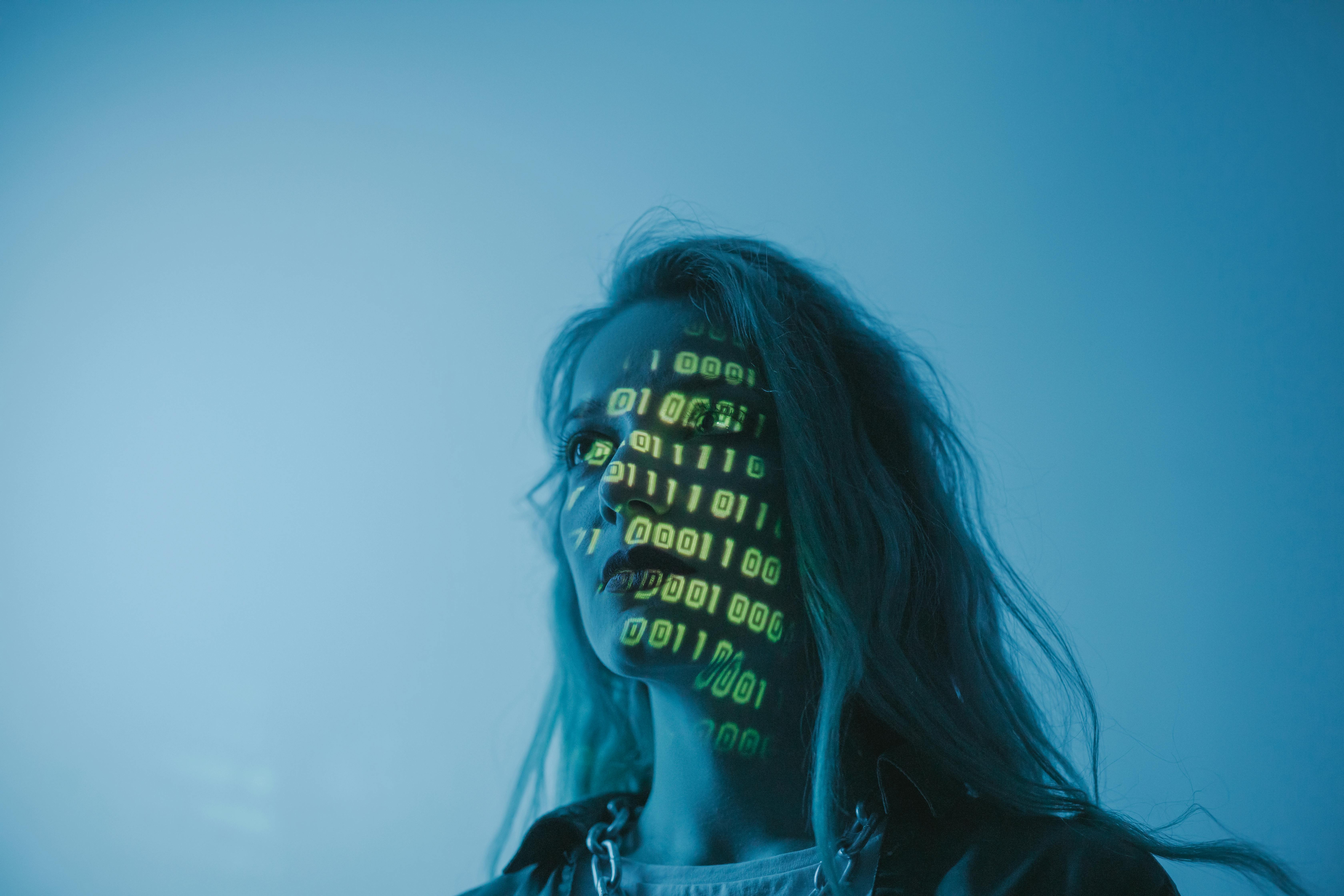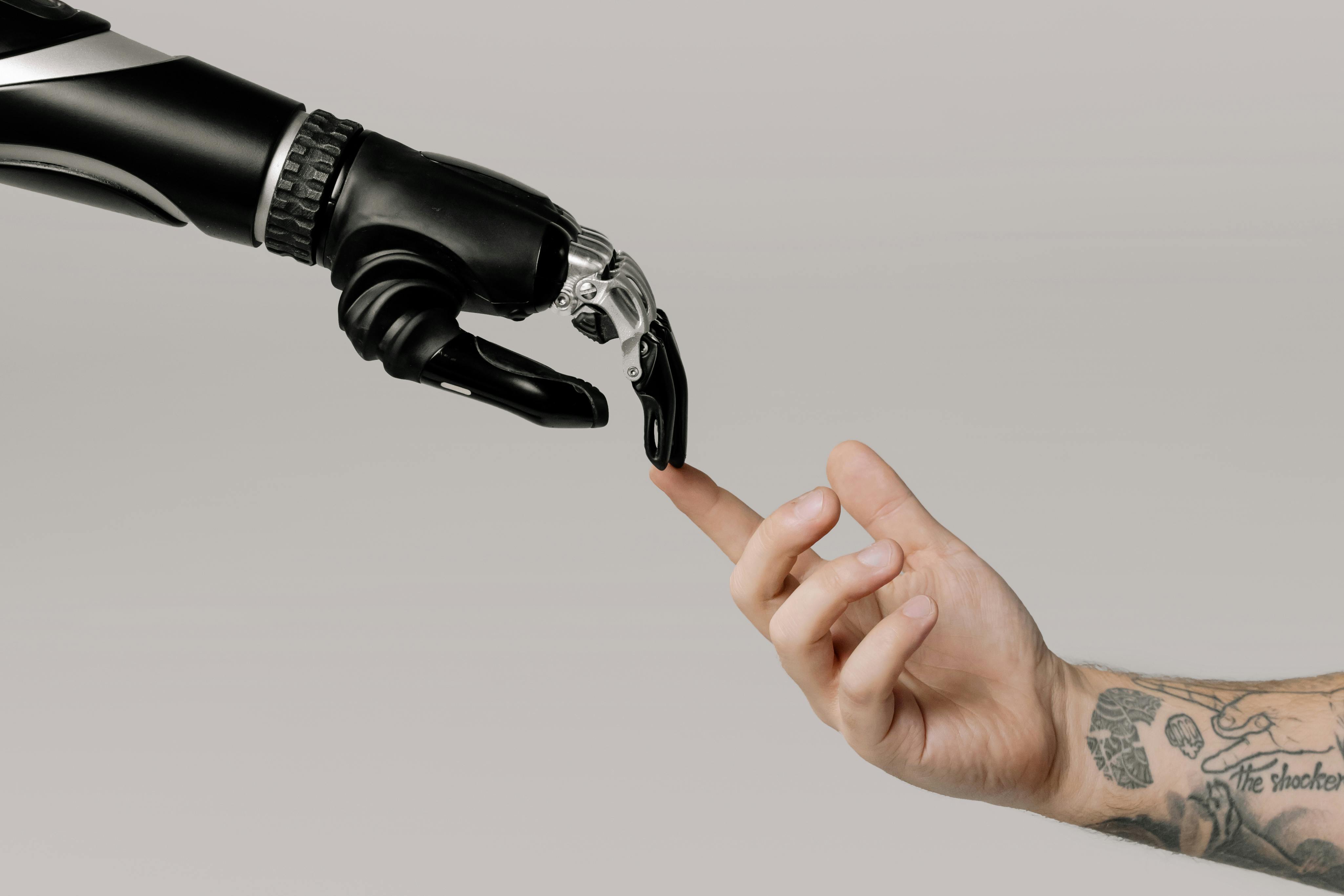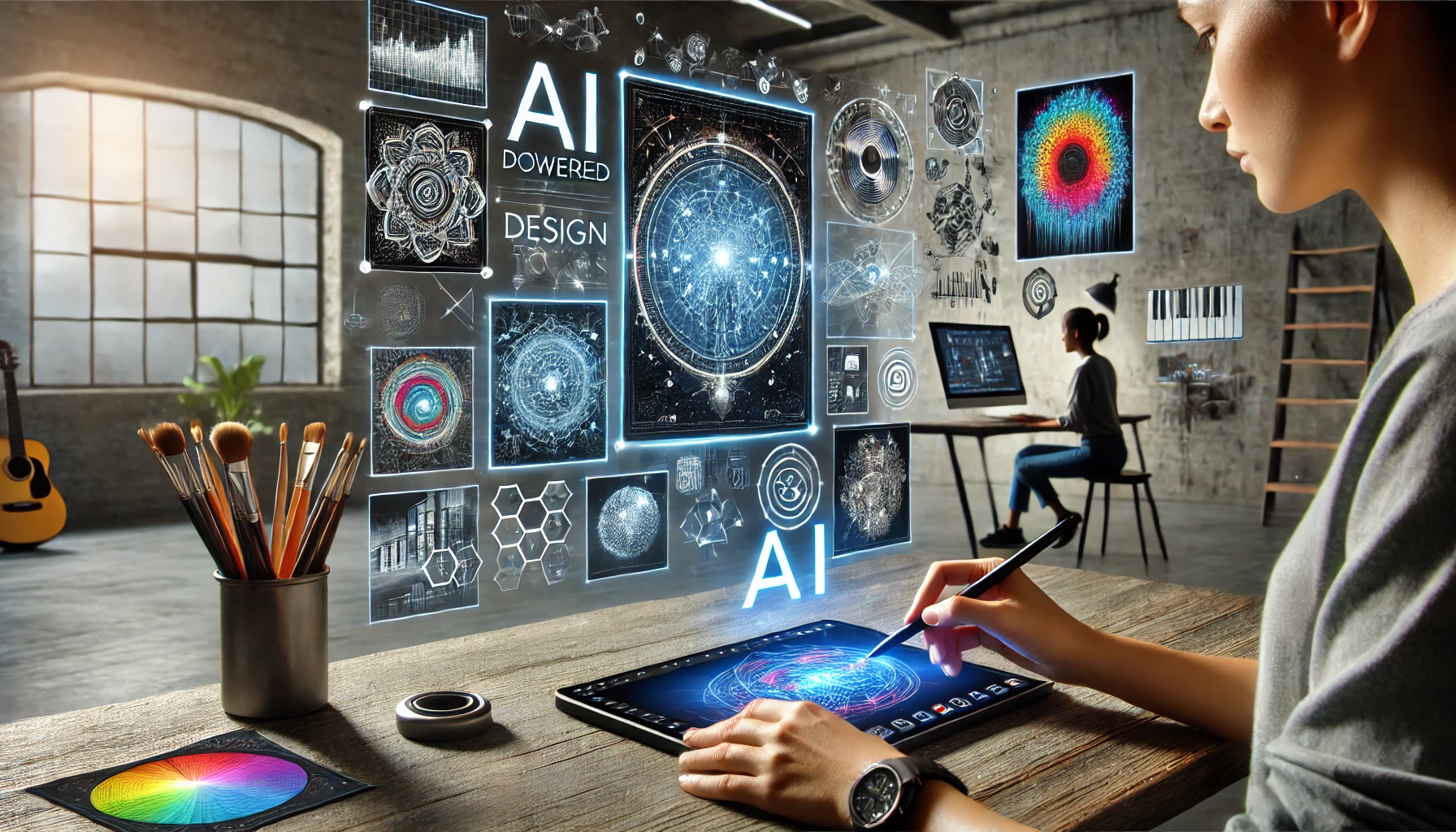Artificial Intelligence (AI) is revolutionizing the creative industries, transforming how artists, designers, and content creators approach their craft. What was once considered a uniquely human domain—creativity—is now being enhanced and reimagined through AI partnerships. From generating stunning digital artwork to composing original music, AI tools are opening new frontiers of creative expression that were previously unimaginable. In this article, we’ll explore how these technologies are reshaping artistic practices and offering new possibilities for creators across disciplines.

1. Understanding AI’s Role in the Creative Process
The relationship between AI and creativity isn’t about replacing human artists—it’s about collaboration. Marina Abramović, renowned performance artist, recently observed: “AI is not the enemy of art; it’s a new medium that offers unprecedented possibilities for expression.” This perspective highlights how AI is becoming a powerful creative partner rather than a replacement for human creativity.
AI enhances the creative process in several important ways:
- Inspiration and ideation: AI can generate unexpected combinations and patterns that spark new creative directions human artists might not have considered.
- Technical assistance: AI can handle complex technical tasks, allowing artists to focus more on creative decision-making and less on execution.
- Process acceleration: Creative professionals can iterate more quickly, testing multiple variations of designs, compositions, or concepts in a fraction of the time it would take manually.
- Style exploration: Artists can experiment with different artistic styles and techniques without years of traditional training in each style.
As designer João Martins from São Paulo explains, “Working with AI tools has fundamentally changed my creative process. I now spend less time on technical execution and more time refining conceptual elements that truly distinguish my work.”
2. Transformative AI Tools for Visual Artists and Designers
Visual creators now have access to an expanding suite of AI tools that enhance their capabilities across disciplines:
A. Digital Art and Illustration

Deep Dream Generator has evolved significantly since its inception at Google. The platform now offers multiple artistic styles and allows fine-grained control over the transformation process. Brazilian digital artist Luisa Campos describes her experience: “Deep Dream helps me break through creative blocks. Often I’ll upload a simple sketch and let the AI suggest possibilities I hadn’t considered. The results spark new directions that I then develop further with my own aesthetic judgment.”
Runway ML has become a staple for artists seeking to blend traditional techniques with AI capabilities. Unlike simpler generators, Runway provides creators with advanced tools for video manipulation, style transfer, and even 3D model generation. What makes Runway particularly valuable is its accessible interface that doesn’t require coding knowledge, making sophisticated AI accessible to artists from diverse backgrounds.
AI Tool Spotlight: Runway ML’s “Gen-2” feature allows creators to transform still images into short videos or extend existing videos with AI-generated content. This technology is enabling filmmakers and visual artists to prototype concepts that would previously have required extensive production resources.
B. Graphic Design and Visual Communication
Canva AI has transformed from a simple design platform into an intelligent creative assistant. Its Magic Design and Text to Image features now allow even novice designers to create professional-quality materials. The system learns from user preferences, gradually tailoring suggestions to match individual aesthetic preferences.
Maria Costa, a marketing specialist in Rio de Janeiro, notes: “Canva AI has revolutionized our workflow. What previously required hours of back-and-forth with designers can now be accomplished in minutes. The AI suggests layouts that actually make sense for our brand, and we can rapidly test different concepts before finalizing designs.”
Adobe Sensei AI represents perhaps the most sophisticated integration of AI into professional design tools. Embedded across Adobe’s Creative Cloud suite, Sensei now powers intelligent features like:
- Content-Aware Fill in Photoshop that seamlessly removes unwanted elements
- Auto-Reframe in Premiere Pro that intelligently recomposes video for different aspect ratios
- Generative Fill that can extend images or add new elements based on text prompts
- Font matching that can identify and suggest similar typefaces from photographs
Professional photographer Carlos Mendez shares: “Adobe’s Sensei features have fundamentally changed my post-production workflow. The AI handles technical tasks like object removal and sky replacement with remarkable precision, allowing me to focus on the creative direction rather than technical execution.”
C. Music and Sound Design
AIVA (Artificial Intelligence Virtual Artist) has matured into a sophisticated composition tool used by professionals across the music industry. The platform can now generate full orchestral arrangements, adaptive game soundtracks, and genre-specific compositions that adhere to music theory principles.
Composer Eduardo Santos, who creates soundtracks for Brazilian independent films, explains: “AIVA doesn’t replace musical training, but it dramatically accelerates the composition process. I can generate multiple musical themes in minutes, select the most promising directions, and then refine them with my own expertise. This collaboration between human and AI creativity has allowed me to take on more projects and experiment with styles outside my comfort zone.”
“The relationship between musician and AI is like a conversation between two creative entities. Each brings different strengths to the table—the AI offers computational power and pattern recognition, while the human brings emotional intelligence and cultural context.”— Eduardo Santos, Film Composer
LANDR AI Mastering has transformed the audio production landscape by making professional-quality mastering accessible to independent musicians. The system analyzes musical characteristics and applies appropriate processing chains for optimal sound quality across different playback systems.
“Before LANDR, professional mastering was financially out of reach for many independent artists,” notes music producer Fernanda Lima. “Now my clients can release tracks that compete sonically with major label productions at a fraction of the traditional cost. The AI continues to improve, with recent updates allowing for more stylistic specificity in the mastering process.”
3. AI for Writers and Storytellers
The written word hasn’t escaped AI’s transformative influence. Writers now employ various AI tools to enhance their storytelling:
AI-powered story generators like NovelAI and Sudowrite have evolved beyond simple text completion. These sophisticated systems can now:
- Generate character backgrounds with consistent psychological traits
- Suggest plot developments that maintain narrative tension
- Create descriptive passages in specified literary styles
- Offer alternative dialogue that maintains character voice consistency
Novelist Patricia Alvarez shares: “I use AI as a sophisticated brainstorming partner. When I’m developing a new character or facing a plot challenge, I’ll prompt the AI with different scenarios. The suggestions aren’t always usable directly, but they frequently spark connections I wouldn’t have made otherwise.”
AI-driven scriptwriting tools like Deepstory are changing film and television production. These specialized systems analyze successful screenplays to understand structural elements that engage audiences. Writers can input plot points and character descriptions, receiving suggestions for scene structure, pacing, and dialogue that align with proven storytelling principles.
AI-enhanced poetry and lyric writing tools represent perhaps the most surprising development in creative writing. Applications like Verse by Verse analyze the works of established poets and can suggest lines and stanzas in their style. Musicians are increasingly using AI lyric generators to overcome writer’s block and explore new thematic territory.
Singer-songwriter Rafael Oliveira notes: “AI helps me break established patterns in my writing. I’ll input a theme or concept, and the AI suggests lyrical approaches I might not have considered. I always modify and personalize the output, but the initial suggestions often lead to more authentic and original work.”
4. The Future of AI in Creative Industries

As AI technology continues advancing, we can anticipate several transformative developments in the creative field:
A. AI-powered Virtual Creative Assistants
Beyond current tool-specific applications, we’re seeing the emergence of integrated AI assistants that can work across creative disciplines. These systems understand context and can suggest relevant approaches based on project parameters. For instance, an architectural design assistant might recommend structural elements, material choices, and environmental considerations based on client requirements and site conditions.
Designer Paulo Mendes predicts: “Within two years, most creative professionals will work alongside specialized AI assistants that understand their personal style and preferences. These systems will handle technical aspects while offering creative suggestions that align with the artist’s vision.”
Emerging Trend: Creative AI assistants are beginning to incorporate multimodal capabilities, understanding and generating content across text, images, audio, and video simultaneously. This allows for more seamless creative workflows where a single AI can help with multiple aspects of a project.
B. AI-enhanced 3D Modeling and Animation
The latest developments in AI-powered 3D modeling are particularly revolutionary. Tools like Point-E and GET3D can generate complex 3D models from text descriptions or reference images. This capability is transforming industries like:
- Game development: Designers can rapidly prototype environments and characters
- Architecture: Firms can generate multiple design variations based on site parameters
- Product design: Manufacturers can explore numerous form factors before physical prototyping
- Film production: Studios can visualize complex scenes before committing to expensive shoots
Game developer Gabriela Santos observes: “AI-generated 3D assets have transformed our production pipeline. What previously required weeks of modeling can now be accomplished in hours. This allows our human artists to focus on refinement and creative direction rather than basic asset creation.”
C. AI-driven Personalized Creative Tools
Perhaps the most exciting frontier is the development of AI systems that adapt to individual creative styles. These personalized tools analyze a creator’s body of work to understand their aesthetic preferences, technical approaches, and stylistic signatures. The AI then offers suggestions and assistance that align with that personal creative vision.
Illustrator Miguel Torres explains: “I’ve been training an AI on my illustration style for several months. The system now understands my color preferences, composition tendencies, and the types of characters I typically create. It helps me maintain consistency across projects while suggesting variations that still feel authentic to my artistic voice.”
5. Ethical Considerations and Best Practices
While AI offers tremendous creative potential, its use raises important ethical questions that artists and designers must navigate:
A. Attribution and Authenticity
As AI becomes more deeply integrated into creative processes, questions of attribution become increasingly complex. Creative professionals are developing various approaches to transparency:
- Some clearly label which aspects of work were AI-assisted
- Others view AI as simply another tool in their creative arsenal that doesn’t require specific attribution
- Industry standards are emerging around disclosing AI involvement in commercial creative work
Art curator Ana Martins suggests: “The key is transparency with audiences. Artists should be open about their process, including AI involvement, while emphasizing the human judgment and direction that remains essential to meaningful creative work.”
B. Developing an Effective Human-AI Creative Partnership
Creative professionals who successfully integrate AI into their workflow typically follow certain principles:
- Use AI for divergent thinking: Let AI generate multiple possibilities that expand your creative options
- Apply human judgment: Critically evaluate AI suggestions against your artistic vision and project goals
- Refine and personalize: Modify AI outputs to incorporate your unique perspective and aesthetic sensibilities
- Focus on areas of strength: Use AI for technical tasks where it excels while applying human creativity to conceptual elements
Designer Clara Rodrigues shares her approach: “I view AI as a collaborative partner with different strengths than mine. The AI excels at generating variations and handling technical details, while I contribute conceptual direction, emotional resonance, and cultural context that the AI cannot fully understand.”
“The most successful AI-human creative partnerships aren’t about surrendering creative control to algorithms, but rather about learning how to conduct an orchestra of computational tools that expand what’s possible.”— Clara Rodrigues, Digital Designer
Conclusion: A New Creative Paradigm
AI is fundamentally transforming creative practices across disciplines, offering tools that expand human capabilities rather than replace them. As these technologies continue to evolve, we’re witnessing the emergence of new creative paradigms that blend human imagination with computational capabilities in unprecedented ways.
For artists, designers, musicians, and writers willing to explore these tools, AI offers possibilities for creative expression that previous generations could only imagine. The most successful creators will be those who develop effective partnerships with AI—using these systems to enhance their unique creative vision while maintaining the human perspective that gives art its meaning and emotional resonance.
Getting Started with AI Creativity: If you’re new to AI creative tools, begin by exploring free or trial versions of platforms like DALL-E (image generation), Canva AI (design), or Mubert (music creation). Experiment with different prompts and settings to understand how AI interprets creative directions, then gradually incorporate these tools into your established creative process.
Are you ready to explore how AI can enhance your creative process? Start with one of the tools mentioned above and experiment with incorporating AI into your workflow. The future of creativity is collaborative, and the partnership between human and artificial intelligence promises to unlock new frontiers of artistic expression.
Have you used AI tools in your creative work? Share your experience in the comments below!
References and Further Reading
- Elgammal, A., Liu, B., Elhoseiny, M., & Mazzone, M. (2024). Creative AI: The New Frontier in Art and Design. Journal of Artificial Intelligence Research, 76, 112-145.
- Miller, A. I. (2023). The Artist in the Machine: The World of AI-Powered Creativity. MIT Press.
- Santos, L., & Pereira, F. (2024). AI and Music Composition: Emerging Practices in Brazil. Brazilian Journal of Technology and Creative Arts, 8(2), 78-93.
- World Economic Forum. (2024). The Future of Jobs Report: Creativity in the Age of AI. Retrieved from https://www.weforum.org/reports/the-future-of-jobs-report-2024/
- Hertzmann, A. (2023). Visual Indeterminacy in Generative Neural Art. Leonardo, 56(4), 394-398.
- Adobe. (2024). Adobe Sensei and the Future of Creativity. Adobe Whitepaper. Retrieved from https://www.adobe.com/sensei/whitepaper.html
- Oliveira, R., & Silva, M. (2024). AI-Assisted Music Production: Democratizing Professional Sound. Sound and Music Computing Conference Proceedings, 267-274.
- International Association of AI in Design. (2024). Ethical Guidelines for AI in Creative Practices. Retrieved from https://www.iaaid.org/ethics

